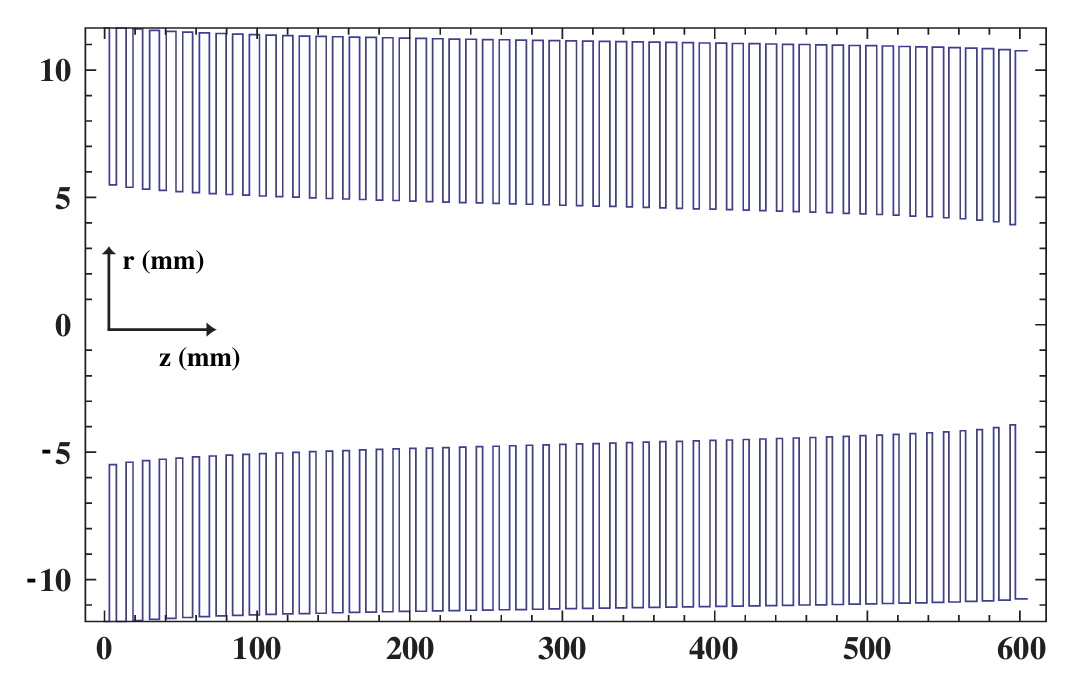Here the wavenumber changes as a function of the cell number (the aperture pinches down and $k(\omega, z)$ is modified accordingly).
The propogation of the trapezoidal function down the linac is evaluated by multiplying the Fourier transform of the Trapezoid with $\displaystyle \exp\left(i \int_0^{z}k(\omega,z') \textrm{d}z'\right)$, and then taking the inverse Fourier transform at a particular value of z.
The animation below shows the propagation of an initially sharp trapezoidal function (with a rise and fall time of 10 ns) down the linac. Three things in particular are worth noting:
1. The pulse spreads out, or disperses.
2. The pulse becomes distorted due to dispersion.
3. The amplitude diminishes as the wave progresses down the linac.

Also, in case you are interested, the linac (linear accelerator) is named H60VG3 because it has a high phase advance per cell, and it consists of 55 cells (making it 60 cm long), and with an average group velocity $3 \%c$.